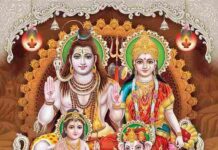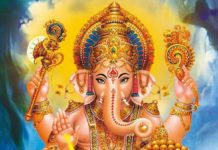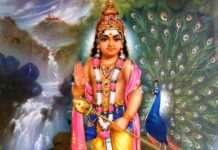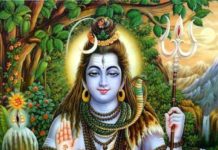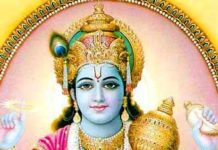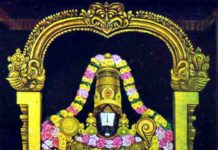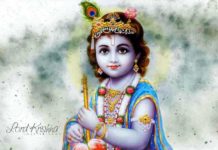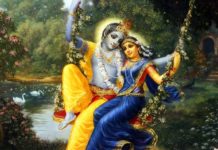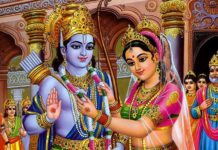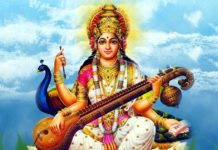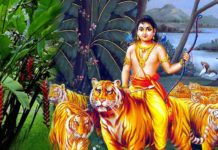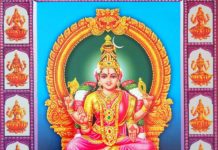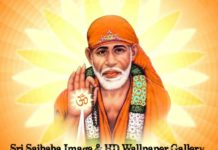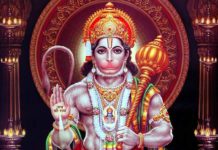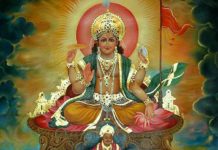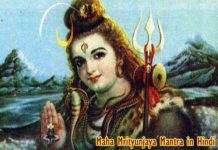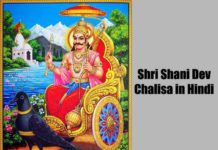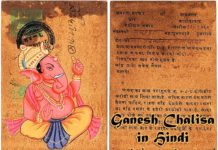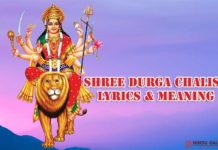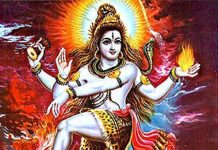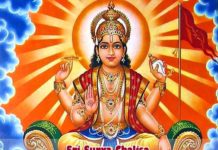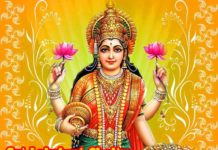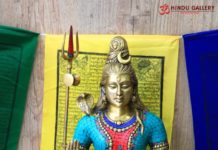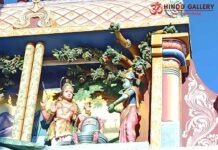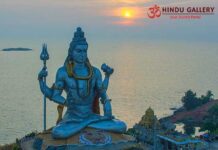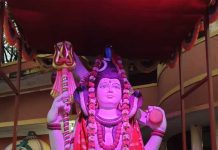Sri Thyagaraja Temple is situated at Thiruvarur in the Southern part of Tamil Nadu State. The temple is one of the largest temples in India and is ascribed to the worship of Bhagwan Shiva. The temple is foremost of the Shiva Temples which were eulogized by the Saivaite Vedic Scholars known as Samaya Kuravar. Hence this is called Padal Pettra Sthalam.
In Thevaram, the place is referred to as Arur. There is also a belief that this place was the first to emerge on earth. As the holy place it is being known as Thiruvarur. It is also likened to moolasthanam.
The place is also known as Kamalalaya Kshetra which means the place of blossoming lotuses. The temple tank is called as Kamalalayam, the temple of lotuses.
Sri Thyagaraja temple is one of the pancha bootha sthalam temples. This temple refers to Prithvi, the land.
History
The history of this ancient temple is ascertained from the prayer songs, hymns and the stone inscriptions in the temple. The temple is said to be in existence since 1st millennium C.E.
The temple encompasses nearly 30 acres (5 veli) of land and is one of the biggest temples in India. The temple tank is also of the same area.
The temple has nine gopurams, eighty vimanas, twelve walls, thirteen mandapams, fifteen theerthams(water bodies), three flower gardens, three large precincts and more than 100 shrines. The eastern tower at the height of nearly 100 feet is the tallest.
There are about twenty-four temples in the premises and eighty six Sri Vinayaka Vigrahas and three hundred and seventy five Shiv-Ling Murthys.
The temple is believed to be built in Chola Dynasty in 9th Century with later expansions by Vijaya Nagara, Saluva and Tuluva dynasty rulers.
As per inscriptions, Pallavas and Kings of other dynasty had liberally donated gold, silver and copper to the temple for plating. They had also donated hugely for the expansion of the temple.

Legend
There are several legends pertaining to the temple. A few of them are narrated here.
Sri Manuneethi Chola
The Chola Emperor Manu Neethi Chola was known for his moral and ethical outlook in ruling his Kingdom. His capital was Thiruvarur. One day, his son had accidentally killed a calf by riding his cart on it. The mother cow came and cried at the King’s court ringing the bell tied up for the purpose. The King then immediately put his son on the path and rode his cart on the son. Bhagwan Shiv was impressed with the King’s steadfastness and granted the boon for the revival of the calf as well as the Prince. This is depicted at the Vitta Vasal in the North-East direction.

Sri Muchukunda Chakravarthy
As per the legend, once Bhagwan Shiv and Sri Parvathi Devi were sitting under a Bilva tree on Shivrathri day. A monkey was sitting atop the tree. Being restless, it plucked the Bilva leaves and dropped them down. All the leaves gathered at the feet of Sri Shiv and Sri Parvathi.
Sri Parvathi looked up. On seeing Her sight, the monkey climbed down the tree and worshipped the divine couple. Sri Shiv said, “Without knowing, you have worshipped me with Bilva leaves that too on Shivrathri day. Ask for any boon you wish”.
The monkey said, “I want to be born as human with monkey face. I should remember my current birth as monkey. I want to be your devotee always”. The divine couple granted the born.
In the next birth, the monkey was born as a human child with the monkey face. He was also born with a weapon named Kundham. In Tamil, monkey is also called as Musu. Hence the Child was named as Musukundha.
Musukundha went on to become the emperor. He was called as Sri Musukundha Chakravarthy. He was pious, kind hearted, brave and very much an ardent Shiv Bhakth. His knowledge and generosity were matchless and great. Knowing the King’s prowess, Lord Indra had approached Sri Musukundha to diminish the Asuras who were troubling the Devas. Sri Chakravarthy had obliged. Lord Indra was happy and asked the emperor for any wish. Sri Musukundha Chakravarthy had asked for the Vigraha of Sri Thyagaraja, a manifestation of Bhagwan Shiv.
Bhagwan Shiv is called as Sri Thyagaraja as He had consumed halahala poison from the cosmic ocean for the betterment of the universe.
Sri Maha Vishnu, in His bosom, had the vigraha of Sri Shiv as Sri Thyagaraja. He had made a vigraha of the same and was doing puja. After sometime, He had had over the vigraha to Lord Indra and asked him to continue to do puja.
Sri Musukundha Chakravarthy asked Lord Indra to get him the Sri Thyagaraja vigraha given by Sri Vishnu. Lord Indra was reluctant to part with the divine idol. At the same time, he had realized that he could not go back on his promise to the emperor. So, he made six idols like the original.
He had displayed all the seven idols and asked the emperor to choose any one. Sri Musukundha went near each of the idols. When he reached the fifth one, he felt good vibrations in his body. He had hugged the idol and told Indra that he would take it. Indra surmised that it was the original and that the emperor identified it through divine power only.
He then had handed over the original and asked the emperor to take the rest of the idols as well as the token of appreciation.
The emperor had installed the original Sri Thyagaraja at this temple. This legend is said to be specified in Musukundha Sahasranamam hymns.
The rest of the six Sri Thyagaraja vigrahas are installed at Nagappattinam, Thirunallaru, Thiru Maraikkadu, Thirukkaraiyil, Thiruvoymur and ThirukoLili. All these places are in Tamil Nadu. Including Thiruvarur, all these places are called Saptha Vidanga Sthalam. Vidanga means ‘’non sculpted”.

Sri Sundara Murthy
Once, Bhagwan Shiv was looking at a mirror at Kailash. His reflection came out of the mirror and greeted Bhagwan Shiv. Bhagwan called the emerged image as “Sundara” and hailed Him as His friend.
When Devas and Asuras were churning the cosmic ocean, halahala poison emerged. Devas had requested Bhagwan Shiv to protect them from the poison. Bhagwan Shiv had sent Sri Sundara to fetch the poison.
Sri Sundara had taken the entire hala hala poison and reduced it into a capsule and brought it to Bhagwan. Bhagwan had consumed it. However, Sri Parvathi Devi had stopped the poison in His throat. Because of this, Bhagwan’s throat had become bluish. Hence, He is worshipped as Sri Neela Kanta.
Thus, Sri Sundarar was always with Bhagwan. One day, Bhagwan had asked Sri Sundara to fetch flowers for puja. Sundarar saw two girls named Aindirai and Kamalini at the garden and felt attracted to them.
He came to Bhagwan feeling ashamed. When Bhagwan ascertained the reason, He told Sundarar that He should be born on earth and lead family life for a while due to karma effect. Bhagwan also promised Sundarar that He would bring him back to Kailash at the appropriate time.
Sundarar had assented. He was born as Aarooran (a) Aalaala Sundaran, a brahmin boy. When the elders of the family had planned for Sundara’s wedding, Bhagwan Shiv appeared in the form of an old brahmin and told Sundara that he was His slave. Sundara, being a youngster, had challenged the old man to prove His claim.
The old brahmin (Bhagwan Shiv) had shown a palm-script and told that Sundarar’s grand father had given an undertaking that all his successors would be the slaves of the old man. Sundarar snatched the script from the old man and torn it. He also called the old man as mad.
The old man got angry and demanded that there should be a proper enquiry as the boy had torn off the script even before checking it. All had accepted. The old man stormed out followed by Sundarar and the entire crowd moved with them.
The old man went into Thiruvennai Nallur Shiv temple. The people of that place also were in the temple. Again the same duel erupted. Sundarar asked for proof thinking that the old man could not produce it as he had already torn it. However, the old man had taken out another palm-script which had the legend “My successors are slaves to Thiruvennai Nallur Pithan” duly signed by the grand father of Sundarar. The people there verified the signature with old records and confirmed its authenticity.
Then the old man disappeared. Sri Sundarar had realized that the entire act was done by Bhagwan Shiv Himself. He started composing hymns on Bhagwan.
Sri Sundarar came to Thiruvarur. There He saw Paravai Nachiar, who was the reincarnation of Kamalini. Paravai Nachiar was a dancer. With the blessings of Bhagwan Shiv, they got married on Panguni Uthiram. Since Sundarar had no means of income, a farmer in the nearby village named Gundaiyur had agreed to give rice paddy to Sundarar.
After sometime, due to draught, Gundaiyur farmer could not provide the paddy. Sri Sundarar had gone to Thiru Kolili, the nearby village seeking help from Bhagwan Shiv. Seeing the plight of Sri Sundarar, Bhagwan had blessed that a huge mountain of paddy be formed at the place. It happened instantly.
Sri Sundarar was aghast at the mountain and He knew that transporting it to Thiruvarur would be a difflicult job. So, He again prayed to Bhagwan to help Him. At that night, all the Shiv Bhuth Ganas had taken the mountain of paddy and dumped it in Thiruvarur.
Next day morning, the entire place of Thiruvarur was full of paddy grains. People could not even open their doors. Paravai Nachiar had announced that the households can keep the grains available in their vicinity. Immediately, the place became clean.

Sri Nami Nandhi Adigal
He was an ardent Shiv Bhakt. He used to light the lamps in the temple by brining oil from his home. One day, he had to rush to the temple from somewhere else. He did not have time to go home to fetch oil. So, he went to a house nearby the temple and asked for oil. The residents of the house were non-believers. They told him, “there is a lot of water in temple tank. Why don’t you fetch water from there and light the lamp?”. As lighting time was running out, Sri Nami Nandi went to the temple, fetched the water and poured in the lamps. To the surprise and shock of the non-believers, the lamps started lighting with mere water. It all happened due to the power of devotion of Sri Nami Nandi and the blessings of Sri Thyagaraja.

Music Thri Murthys
Sri Thyagaraja, Sri Shyama Sastry and Sri Muthuswamy Dikshit are the three doyens of Carnatic music; Thiruvarur is the birth place of these three murthies.
Shiv Ganas
It is believed that being born in Thiruvarur itself is the greatest boon. It is believed that only Shiv Ganas, the warriors of Bhagwan Shiv are blessed to be born in this place. Sri Sundarar had mentioned in his Devaram that he was the slave of those born in Thiruvarur.
Chariot
The chariot of the temple is the largest. It is approximately 96 feet tall and is said to weigh 300 tons.

It has excellent sculptures allover.

Apart from this there are other four chariots for Sri Ambal, Sri Ganapathi, Sri Murugan and Sri Chandikeswarar.
Sri Chakra
At a specific point in the temple premises, seven gopurams can be seen. It is said to depict the seven layers of Sri Chakra.

Kamalalayam
This is the temple pond which is huge in size. As per the legend, Sri Mahalakshmi had done penance praying to Sri Moolattaneswarar for marrying Sri Maha Vishnu.

In the middle of Kamalalayam tank, a small Shiv temple dedicated to Sri Naduvana Nathar is situated. Abhishekam done at the Pradosha time is considered very special. One has to use boat to reach the temple.

There are 64 bathing ghats in the tank. At each place there are specifications on what should be given as daan. At all ghats, the respective benefits of bathing and making daan are displayed in boards.
Deva neertha kattam opposite west gopuram of the temple is considered to be more auspicious.
Deities
There are several shrines and Deities in the temple premises. The temple has the record of having the maximum number of shrines.
Sri Valmiki Nathar
The Moolavar in the main sanctum is called as Sri Valmiki Nathar. The Shiv Ling is in the form of the ant hill. He is hence hailed as Sri Puttridam Kondar.
Sri Thyagarajar
The presiding Deity of the temple is Sri Thyagarajar.

Sri Thyagarajar is called as Sri Anapaaya Mahipala and Sri Raja Veshadhari. Sri Parvathi Devi is hailed as Sri Kondi in this depiction. Only the faces of the Murthy are visible to the devotees. The entire body is always kept covered. Similar to Chidambara Rahasyam, this is called Thyagaraja Rahasyam. The tilak applied on the forehead of Sri Thyagraja is the mixture of Chandan, saffron and pacha karpooram.

During the holy right foot of Sri Thyagaraja is displayed alongwith the holy left foot of the Goddess Kondi during Arudra Darshan.
The holy left foot of Sri Thyagaraja is displayed alongwith the holy right foot of the Goddess Kondi during Panguni Uthiram.
On the rest of the occasions, the entire form of Sri Thyagaraja and Sri Kondi are always covered with flowers.
 Sri Thyagarajar Urchava Murthy is also called as Sri Veedhi Vitankar. This Deity is taken in the Chariot for procession during temple festivals. Abhishekams are performed to the Deity on the first day of Chaitra month, Aaipasi Vishu, Adi month, first day of Thai month, Margazhi Thiruvadirai day and Panguni Uthiram.
Sri Thyagarajar Urchava Murthy is also called as Sri Veedhi Vitankar. This Deity is taken in the Chariot for procession during temple festivals. Abhishekams are performed to the Deity on the first day of Chaitra month, Aaipasi Vishu, Adi month, first day of Thai month, Margazhi Thiruvadirai day and Panguni Uthiram.
Thoothuvalai Keerai, Pavakkai curry (bitter guard), Big Then Kuzhal (rice snack) fried in pure ghee, Big Vada and Sweet Sugiyan are the special Neivedyam items offered to Sri Thyagaraja.

The Murthy is in the form of Sri Maragatha Lingam. Abhishekam is done only to this Lingam at 08.30 A.M, 11.00 A.M and at 07.00 P.M every day.
Ajaba Natanam, the rhythmic dance form is said to be associated with Sri Thyagarajar. Whenever Sri Thyagarajar idol is moved from the sanctum either to the Vasantha Mandapam or to the Temple Chariot, the movement is said to be followed in Ajaba Natanam rhythm. Here, the dancing is done without any accompaniment of chanting or singing. It depicts the calm movement of breathing. After the car festival, Prayachitha abhishekam is done to Sri Thyagaraja.
The flaming torch (Dheevatti) taken out during the temple procession is very special. It is five feet long and is broad. The fire burns only on molten ghee. Huge sprinklers are used to pour ghee on the flaming fire continuously.
A special medicine made of dried ginger, pepper, thippili and jaggery is offered as Neivedyam to Sri Thyagaraja after procession and is distributed to devotees as prasadam.

Sri Neelothpalambal
Sri Parvathi Devi is worshipped as Sri Neelothpalambal in this temple. Her sanctum is in a separate shrine. She is also worshipped as Sri Adi Parashakthi. Near Sri Neelothpalambal, another vigraha of a woman carrying Bhagwan Muruga is depicted. Sri Ambal’s hand is touching the head of baby Sri Muruga. Sri Devi is also hailed as Sri Alliankothai and Sri Kamalambika.
It is believed that Sri Muthuswamy Dikshithar used to sing in the sanctum of Sri Kamalamba and that Sri Ambal would listen to his Nava varna keerthana sitting stylishly with one leg over the other. This is depicted here and this pose of Sri Ambal cannot be seen anywhere else.
At a corner of Sri Ambal Shrine, there is a plank with 51 letters and it is called as Atchara Peetam. This is the place for meditation.
As per the legend, Sri Kamalambika had done penance at this place to marry Sri Thyagaraja.
The shrines of Sri Vinayaka and Sri Dharma Sastha exist in the precinct of Sri Kamalambika.

Sri Chandikeshwara
There are two Chandikeshwara sanctums in the temple premises. One is Sri Chandikeshwar in Bhagwan Shiv sanctum and the other one is called as Sri Yama Chandikeshwar in a separate sanctum.
Sri Chandikeshwar is also called as Sri Adi Chandikeshwar. The Shiv Ling worshipped by Him is beside Him. This Vigraha is taken out in procession.
As per the legend, it is believed that only Shiv Ganas are born in Thiruvarur. Any sincere Shiv Bhakth born in Thiruvarur is considered immortal. So as ordained by Bhagwan Shiva, Sri Yama Dharma Raja is here in the form of Yama Chandikeshwar at this temple.
Hence the temple is also a Mukthi Sthal, the land of salvation.
Sri Anjaenya’s sanctum is near the Rajagopuram.

The other Sannidhis in this temple are Sri Aanandheeswarar, Sri Achaleswarar, Sri Adageswarar, Sri Varuneswarar and Sri Annamalai Eswarar.

Sri Nandikeshwar is directly facing the presiding Deity. As an unique feature, Sri Nandi is in standing position. The Nandi is also called as Sri Muchukunda Nandi.

Navagrahas
In the first precinct, the navagrahas are placed in the southern side in a straight line unlike other temples where they are placed in a matrix pattern. As per the legend, the navagrahas got alleviated of their curse with the darshan of Sri Thyagaraja. Hence, they all stand in unison worshipping the Bhagwan.
It is believed that devotees with any ill-effects of planetary alignments get cured of their troubles with the darshan.

Mandapams
The temple has six prominent mandapams.
Bhaktha Katchi Mandapam is the Mandapam in which the Panguni Uthiram festival culminates with the arrival of the procession Deity of Sri Thyagaraja here.

Onjal Mandapam is situated opposite Bhaktha Katchi Mandapam. During Thiruvadirai festivals, the procession Deities of Sri Chandra Sekarar and Sri Darunendhu Sekhari Amman are brought for the worship of the devotees.

Panguni Uthiram Mandapam houses the temple museum. This is also called as Sabapathy Mandapam.
Raja Narayana Mandapam is for holding the public religious functions.
Devasiriyar Mandapam is the place where Thiruthonda Thogai was inaugurated.
The Sthala Vruksham of the temple is sigappu pathiri, the red trumpet flower tree.

Timing
The temple is open from 05.00 A.M to 12 Noon and from 04.00 P.M to 09.00 P.M.
Ushath Kala Puja commences at 05.30 A.M followed by Kala Sandhi Puja at 09.00 A.M, Uchi Kala Puja at 12.00 Noon, Saya Ratcha Puja at 06.00 P.M, Irandam Kala Puja at 07.00 P.M and Ardha Jama Puja at 8.45 P.M.
The Saya Ratcha Puja is considered more auspicious. It is believed that all the Devas and Devathas are present to witness the Aarthi of Sri Thyagaraja. A priest dresses himself as Lord Indra to witness the puja. It is believed that worshipping Sri Thyagaraja at Saya Ratcha Puja provides virtuous benefits equal to worshipping all Shiv Lings in the entire world.

Special Pujas are done at the various shrines at the temple on Monday, Friday, Pradosham, Shivrathri, Krithikai, Amavasya, Chathurthi and Pournami days.
The temple timings may differ during festivals and special occasions.

Festivals
As per the legend, Kulothunga Chola II had ordained that atleast fifty tow festivals be celebrated in the temple throughout the year. Some of the festivals are being observed even to-date.
In December-January, Thiruvadhirai Star-day of Margazhi month is celebrated grandly which coincides with Arudra Darshan. The holy feet of Sri Thyagaraja is shown to the Devotees as Padha Darshan.
In February-March, Masi Magam festival is celebrated. The function of depicting Bootha Ganas carrying paddy bags to Sri Sundarar is depicted at this festival.
In March-April, Panguni Uthiram festival is celebrated for ten days. Flag hoisting is done on the Hastha Star-day of Masi month. The last day is the temple chariot festival which also marks the granting of darshan to Sage Vyagra Padha.
In April-May, Chithirai festival is celebrated with lots of festivities.
In July-August, ten-day Aadi Pooram day culminating on Pooram Star-day of Ashada month is celebrated.
All Shiv Rathri festivals, Pradosham and Mondays are dedicated for Shiv Aradahana.
How to reach
Thiruvarur can be reached by road from Thanjavur or Mayiladuthurai. There are lots of temples around Thiruvarur.





